Photo: Julia Beverly/Getty Images
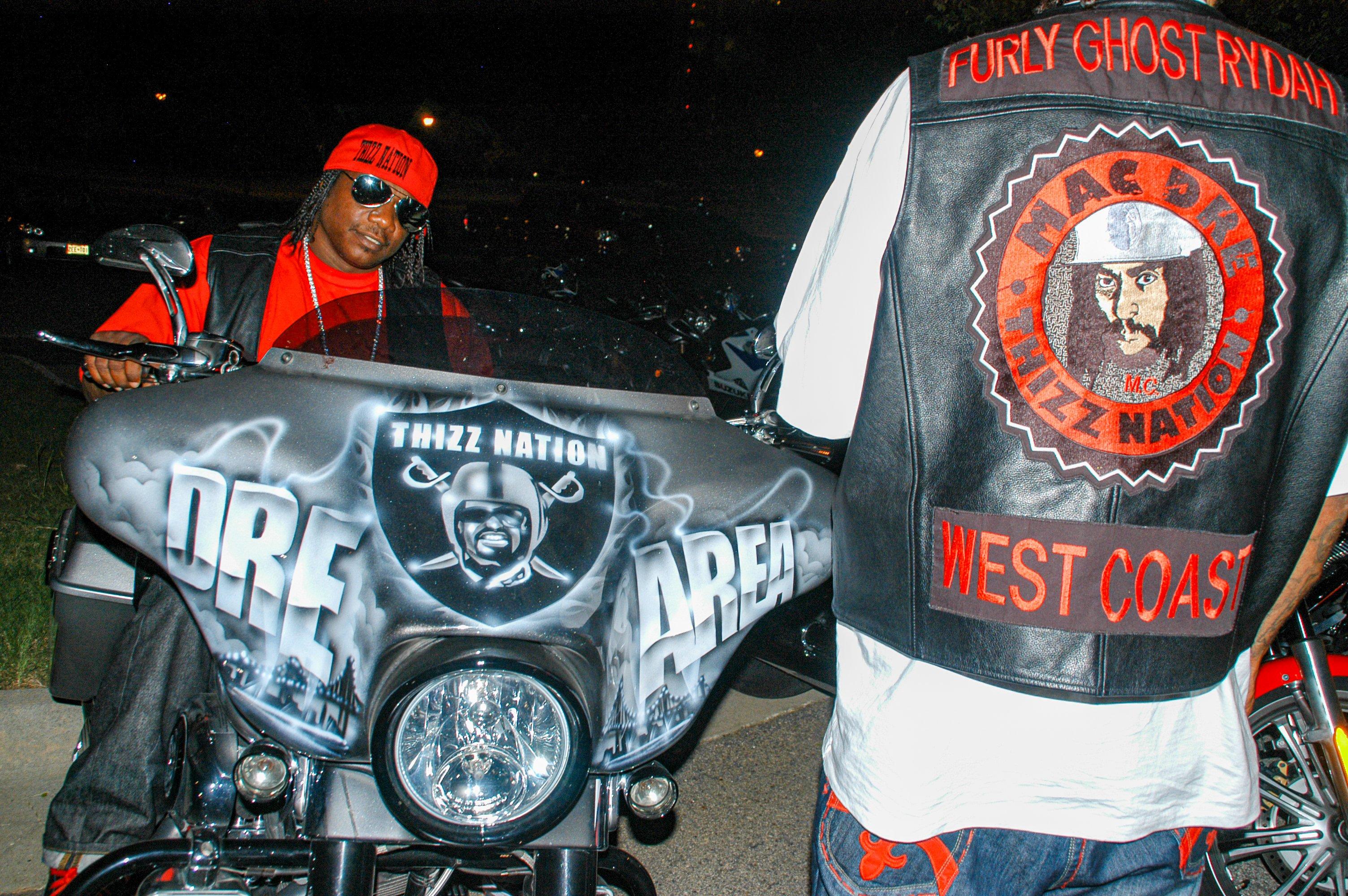
list
5 Ways Mac Dre's Final Living Albums Shaped Bay Area Rap
The rapper was killed just months after the simultaneous release of 'Ronald Dregan: Dreganomics' and 'The Genie of the Lamp.' Twenty years later, read on for how the releases that gave the world "Get Stupid" and "Feelin' Myself" reverberate in hip-hop.
Nearly two decades after his still-unsolved murder took place, Mac Dre remains one of Bay Area rap’s definitive artists and guiding spirits. The rapper born Andre Hicks helped to pioneer and steer the region’s hyphy movement — a music, linguistic, car and party culture that influenced rap and even electronic music globally.
Mac Dre released both his ninth album, Ronald Dregan: Dreganomics, and his 10th album The Genie of the Lamp on the same day: July 20, 2004. Although Mac Dre had been a key figure in the Bay's rap game for years, the two records were some of his most influential, and are now classics in the canon of early aughts hip-hop. The more popular of the pair, Ronald Dregan features "Feelin’ Myself" and "Get Stupid," party anthems that borrowed from rave culture’s sunnier outlook to give architectural shape to the emerging hyphy movement.
Learn more: 11 Hip-Hop Subgenres To Know: From Jersey Club To G-Funk And Drill
Mere months later, Mac Dre was killed in a drive-by shooting on a highway in Kansas City, Missouri on Nov. 1, 2004. His death still stings in grim contrast to the joy, fun and charisma that he brought to his music and live performances. "When Mac Dre got killed, it was like Martin Luther King in the Bay," rapper Too $hort told Revolt in 2022. "It was that kind of loss."
Fortunately, Ronald Dregan: Dreganomics and The Genie of the Lamp preserved him at his happiest musical peak. Twenty years later, GRAMMY.com examines how Mac Dre’s final living albums not only kickstarted a massive posthumous career and movement, but have remained musical and business inspirations for artists in Northern California and beyond.
They Hyped Up Hyphy
Mac Dre put out a DVD called TREAL TV in September 2003 that quickly became legendary throughout the Bay Area. The use of ecstasy and other party drugs most associated with raves at the time became a major theme in the hyphy music that came after his death, and TREAL TV features Mac Dre clowning around, cable access TV style, while intoxicated. ("I’m as high as a fire escape… I’m on everything right now," he says with a grin.)
There’s also footage of him performing live in small towns in Northern California and the Northwest, where people danced with hyper energy (and possibly those aforementioned drugs)and rapped along with all the words. It was the first time many people got to see how physically animated and infectious Mac Dre was as a performer. Bay Area rap music that came in the immediate years before him was largely a lot slower and more serious — one subset is even called "mobb music," suggesting sinister overtones. But TREAL TV showed how cool it was to be a happy gangster.
The momentum of TREAL TV, followed by the double album drop, brought Mac Dre to the forefront of the Bay Area’s burgeoning hyphy movement. Alongside fellow East Bay artist Keak da Sneak and hyphy-themed hits by veteran local artists Too $hort and E-40 produced by Atlanta’s Lil Jon, they would put the Bay Area back on the rap map for major record labels to sign and promote to the world.
Read more: A Guide To Bay Area Hip-Hop: Definitive Releases, Artists & Subgenres From Northern California
They Established Politics As Unusual
The political theme of Ronald Dregan: Dreganomics introduced a humorous political angle for Mac Dre’s songs. This theme would continue even after his passing, via posthumous works released by his mother "Mac" Wanda Salvatto on his Thizz Entertainment label.
Two popular posthumous compilations imagine the rapper in a high office: 2007’s Mac Dre Is Pill Clinton and 2008’s Dre Day - July 5th 1970. The latter features a cover illustration depicting Mac Dre as Uncle Sam with a thizz face (an expression he coined to describe a frown induced by happiness and getting intoxicated).
They Kept It P
There has always been a number of Bay Area artists who have been influenced by Oakland’s pimp culture, which was famously depicted in the 1973 movie The Mack. Some really tried their hand at the adult business, while others just rapped about it.
Both Ronald Dregan: Dreganomics and The Genie of the Lamp come from a perspective of pimping. Musically and lyrically, the former is more lighthearted and party-oriented, while the latter is more overtly street-focused and aggressive. On "My Alphabets" — a collaboration with Suga Free and Rappin’ 4-Tay, California rappers known for rapping heavily about the profession — Dre raps, "You can’t con me/ I’ll slice yo ass thin as salami."
While by no means the only topic tackled in Bay Area rap at the time or today, Mac Dre did his part to keep it alive within the culture, for better or worse, for decades after his death.
They Allowed Mac Dre To Have Life After Death
Without the attention generated by TREAL TV, Ronald Dregan: Dreganomics and The Genie of the Lamp, Mac Dre would not have had the outsized posthumous career that he does. Mac Wanda has lovingly kept her son’s musical legacy alive with the aforementioned posthumous releases and via her own interviews for research projects such as the 2015 documentary Mac Dre: Legend of the Bay.
Just like the late Tupac Shakur’s estate has done, Mac Dre’s posthumous catalog is both robust and highly bootlegged. Official releases on the Thizz Entertainment label have given opportunities to artists in the Bay Area and even in Alaska to share their music with the world through albums and various artist compilations.
They Spawned Many Living Tributes
Mac Dre has had a lasting effect on artists in the generations that have come after him, in the Bay Area and beyond; see Drake and Lil Wayne’s "The Motto" (2011), which interpolates lyrics from Dre’s "Feelin’ Myself," or "Stupid," the new single from YG featuring Lil Yachty and Babyface Ray, which references ecstasy and Mac Dre’s use of the word stupid as a positive term.
Mistah F.A.B.’s 2016 song "Still Feelin’ It" is one of many tributes he’s done in Mac Dre’s memory and offers vivid evidence of how the late MC influenced him to become a strong songwriter, entrepreneur and philanthropist. And you’ll hear echoes of Mac Dre (both figuratively and literally via samples) in promising Bay Area artists who were too young to know Mac Dre, like Guapdad 4000, who released a "Mac Dre Freestyle" that references "Dreganomics" in 2024.
Mac Dre Day events, typically held on or around July 5 to celebrate his birthday, have been a staple in various Northern California cities since his passing. For many, they are a rite of passage of growing up in the Bay Area rap scene. Whether revisiting or listening for the first time, Mac Dre’s 2004 albums still sound fun in 2024, a testament to the lasting legacy of a late artist from the San Francisco Bay Area who just wanted to make his mark.
More Rap News

5 Ways Mac Dre's Final Living Albums Shaped Bay Area Rap

Denzel Curry Returns To The Mischievous South: "I've Been Trying To Do This For The Longest"

5 Rising L.A. Rappers To Know: Jayson Cash, 310babii & More
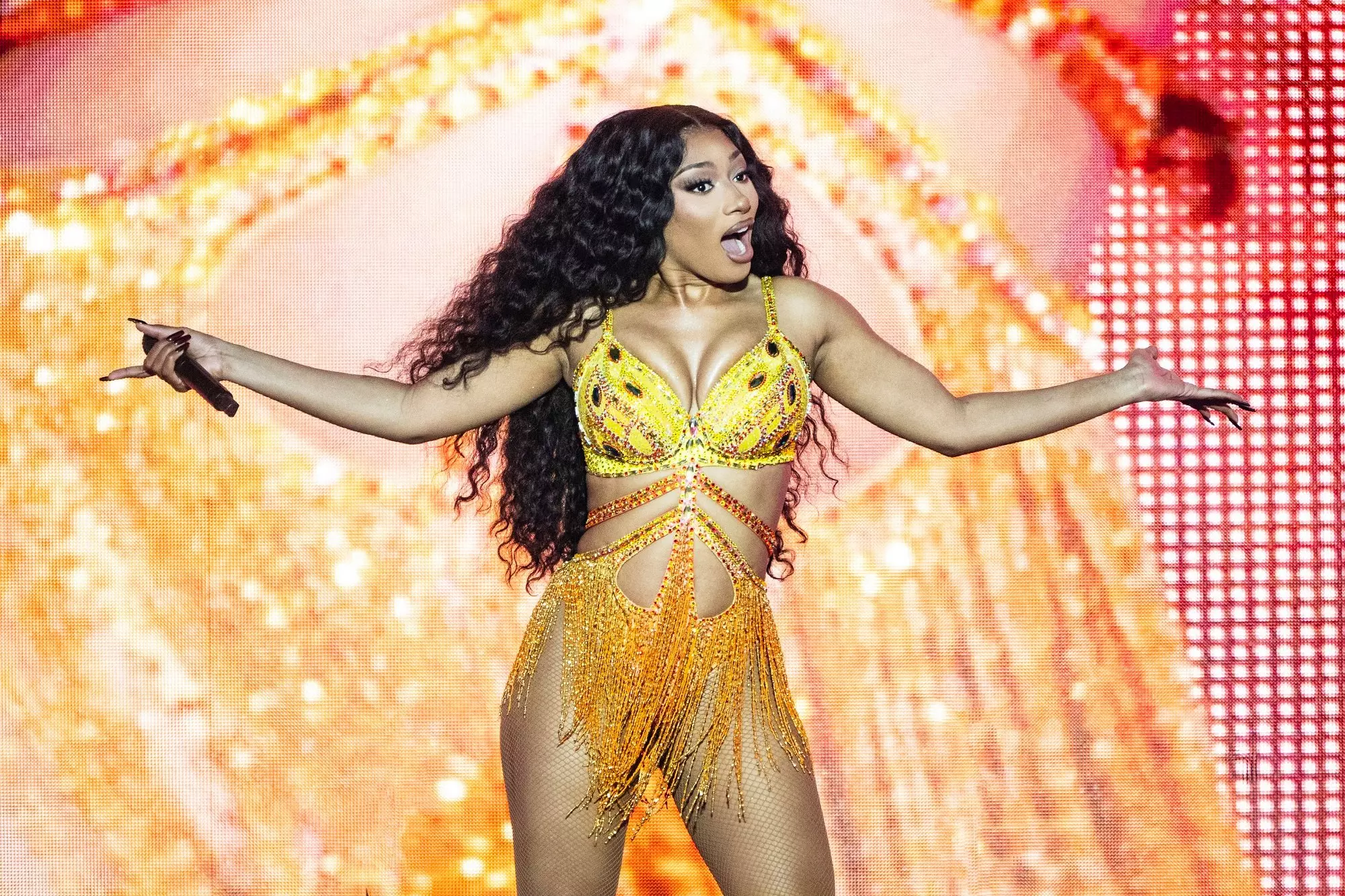
6 Takeaways From Megan Thee Stallion's 'Megan': Snakes, Shots & Self-Assurance
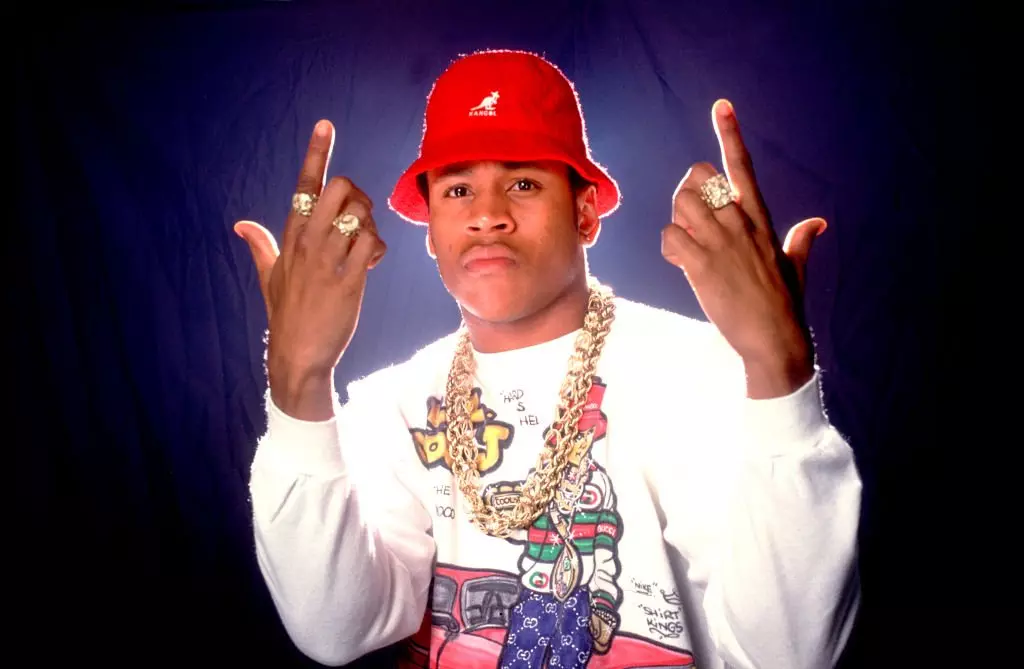
Celebrate 40 Years Of Def Jam With 15 Albums That Show Its Influence & Legacy

Photo: Amy Lee
list
5 Rising L.A. Rappers To Know: Jayson Cash, 310babii & More
From San Diego to the Bay Area, Seattle and beyond, the West Coast bursts with talent. Los Angeles is at the heart of this expanse, and these five rappers are just a few who are showcasing the vibrant sounds of West Coast hip-hop.
GRAMMY winners Kendrick Lamar and Mustard have long repped their California roots. Earlier this summer, their powerhouse anthem "Not Like Us" brought West Coast rap back to its roots and shone a global spotlight on the scene.
Lamar and Mustard are at the forefront of a renaissance in West Coast rap. Their shared roots in Southern California cities — Mustard from Los Angeles and Kendrick from Compton — adds authenticity and resonance to their partnership. Their undeniable chemistry was on display in the video for "Not Like Us," which received a million views less than an hour after its release.
Mustard's signature beats and Lamar's profound lyricism has resurfaced the sound and culture that makes West Coast rap so unique and paved the way for a new generation of artists. All signs suggest that another impactful collaboration may appear on Mustard's upcoming album, Faith of A Mustard Seed.
Learn more: A Guide To Southern California Hip-Hop: Definitive Releases, Artists & Subgenres From L.A. & Beyond
Kendrick Lamar headlined the electrifying Pop Out concert on Juneteenth, which also featured sets from Mustard and DJ Hed. The event saw a handful of L.A. rappers, opening for Lamar in a showcase of the vibrant talent that defines the region's rap scene.
The West Coast is a vast reservoir of talent, stretching from the Bay Area to Seattle. At the heart of this creative expanse is Los Angeles, which brings fresh perspectives, innovative styles, and renewed energy to hip-hop, ensuring the genre thrives. With the stage set for these newcomers to shine, it's the perfect time to take a closer look at some of the rising talents poised to impact the rap scene. While this list only scratches the surface, it offers a glimpse into the diverse and exciting talent from SoCal, the epicenter of the West.
Blxst
Arising from Los Angeles, Blxst initially played the background as a producer but soon demonstrated his ability to excel across all facets of music creation. Blxst's breakout moment came with his platinum-certified single "Chosen," which solidified his place in the music industry. His collaboration on Kendrick Lamar's "Die Hard" from Mr. Morale And The Big Steppers further showcased his skill for crafting hooks that elevate tracks, resulting in two GRAMMY nominations.
As he prepares to release his debut album, I'll Always Come Find You on July 19, Blxst stands at a pivotal point in his career. With a great resume already to his name, his forthcoming album promises to showcase his undeniable talent and leave a lasting impact on the West Coast music scene.
Bino Rideaux
Bino Rideaux is a South Central native and frequent collaborator with the GRAMMY-winning rapper Nipsey Hussle. He is the only artist to have a joint project with Hussle, No Pressure, released before the prolific rapper's untimely death. Rideaux has hinted at having a treasure of unreleased music with Hussle, saved for the perfect moment and album.
Rideaux is known for creating tracks that get the city outside and dancing. He has made three beloved projects with Blxst, titled Sixtape, Sixtape 2, and Sixtape 3 resulting in sold-out shows and a special place in West Coast Rap fans' hearts. Endorsed by industry heavyweights like Young Thug, Rideaux continues to carve his path at his own pace. His journey is nothing short of a marathon, echoing the enduring legacy of his mentor.
Kalan.FrFr
Kalan.FrFr, whose name stands for "For Real For Real," is an artist whose music is as genuine as his name suggests. Growing up in Compton and Carson, Kalan.FrFr has always stayed true to his roots, and exudes the unyielding confidence essential to making it in the City of Angels.
His breakthrough mixtape, TwoFr, showcased his ability to shine without major features, delivering verses with catchy hooks and melodic rap. He's shown he's not confined to one sound, delivering vulnerable tracks like "Going Through Things'' and "Never Lose You." His EP Make the West Great Again, Kalan.FrFr both proves his loyalty to his origins and highlights his versatility. Kalan.FrFr's signature punch-in, no-writing-lyrics-down style keeps his fans on their toes, ensuring that whatever comes next is unpredictable but authentic.
Jayson Cash
Jayson Cash, a rapper hailing from Carson — the same city as TDE artist Ab-Soul — stays true to West Coast rap, from his lyrics to his beat selection. Listening to Jayson Cash's music is like diving into a vivid life narrative. His prowess as a lyricist and storyteller shines through in every verse. He gives his fans an insight into his journey, making it a relatable music experience.
Cash made waves with his debut mixtape, Read The Room, and scored a Mustard beat on the song "Top Down." Two years later, their collaboration continues, with Cash writing on Mustard's upcoming album. Though often seen as an underdog, Cash is not to be underestimated, earning cosigns from West Coast legends like Suga Free and Snoop Dogg. His latest project, Alright Bet, includes a notable feature from Dom Kennedy.
310babii
310babii has achieved platinum-selling status at just 18 years old, while successfully graduating high school. Yet 310babii's career began in seventh grade, when he recording songs on his phone showing early signs of motivation and creativity. His 2023 breakout hit "Soak City (Do It)" quickly gained traction on TikTok — and caught the ears of Travis Scott and NFL player CJ Stroud.
As the song grew in popularity, it led to a remix produced by Mustard, who invited the Inglewood native to join him onstage during his set at The Pop Out. 310babii's innovative spirit shines through in his distinctive visuals, exemplified by the captivating video for his song "Back It Up." His recent debut album, Nights and Weekends, released in February, underscores his evolving talent and promise within the music industry.
Latest News & Exclusive Videos

5 Artists Who Graduated From GRAMMY Camp: Chappell Roan, Maren Morris, Blu DeTiger & More
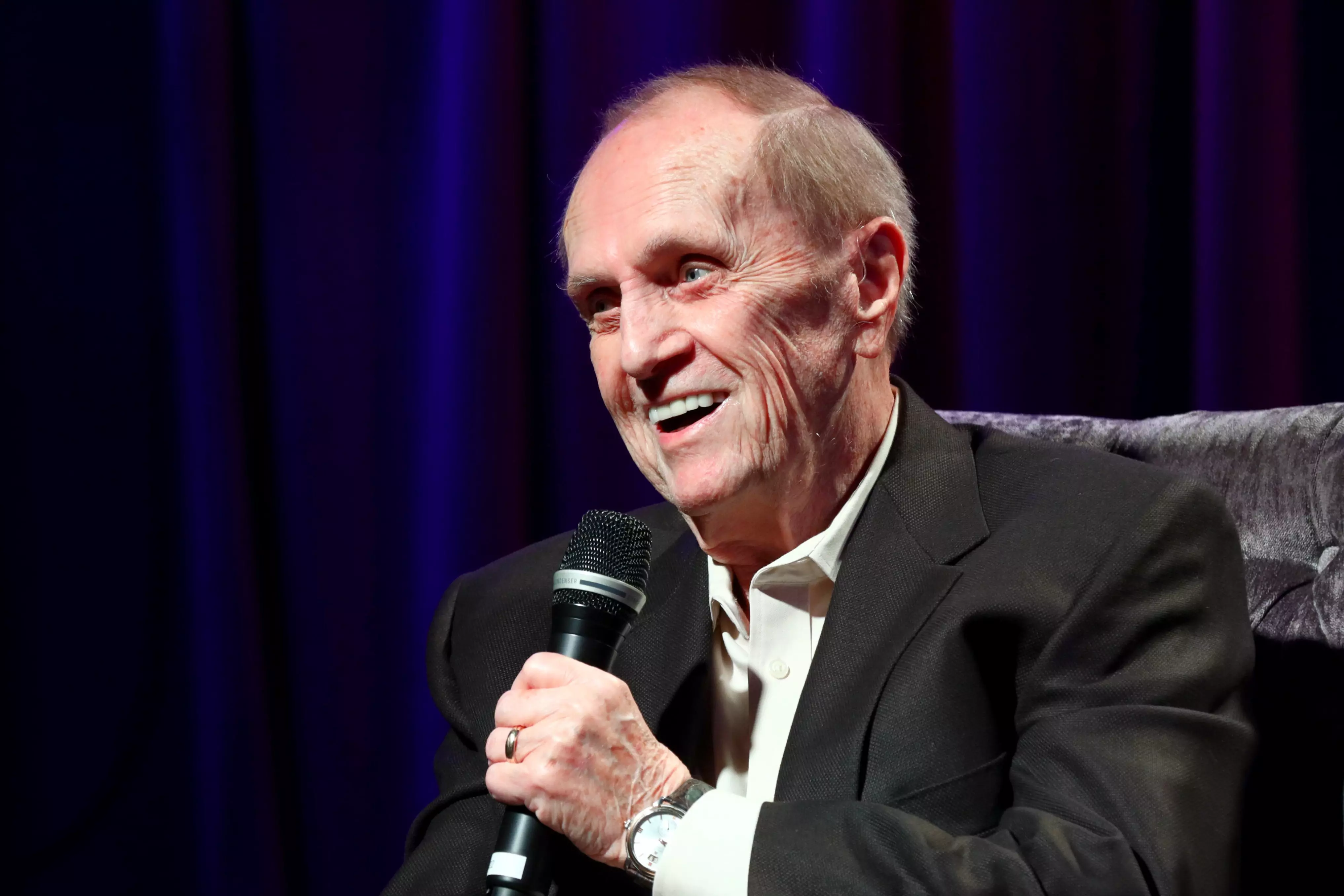
Remembering Bob Newhart, The Comic Who Made GRAMMY History With His Debut Album
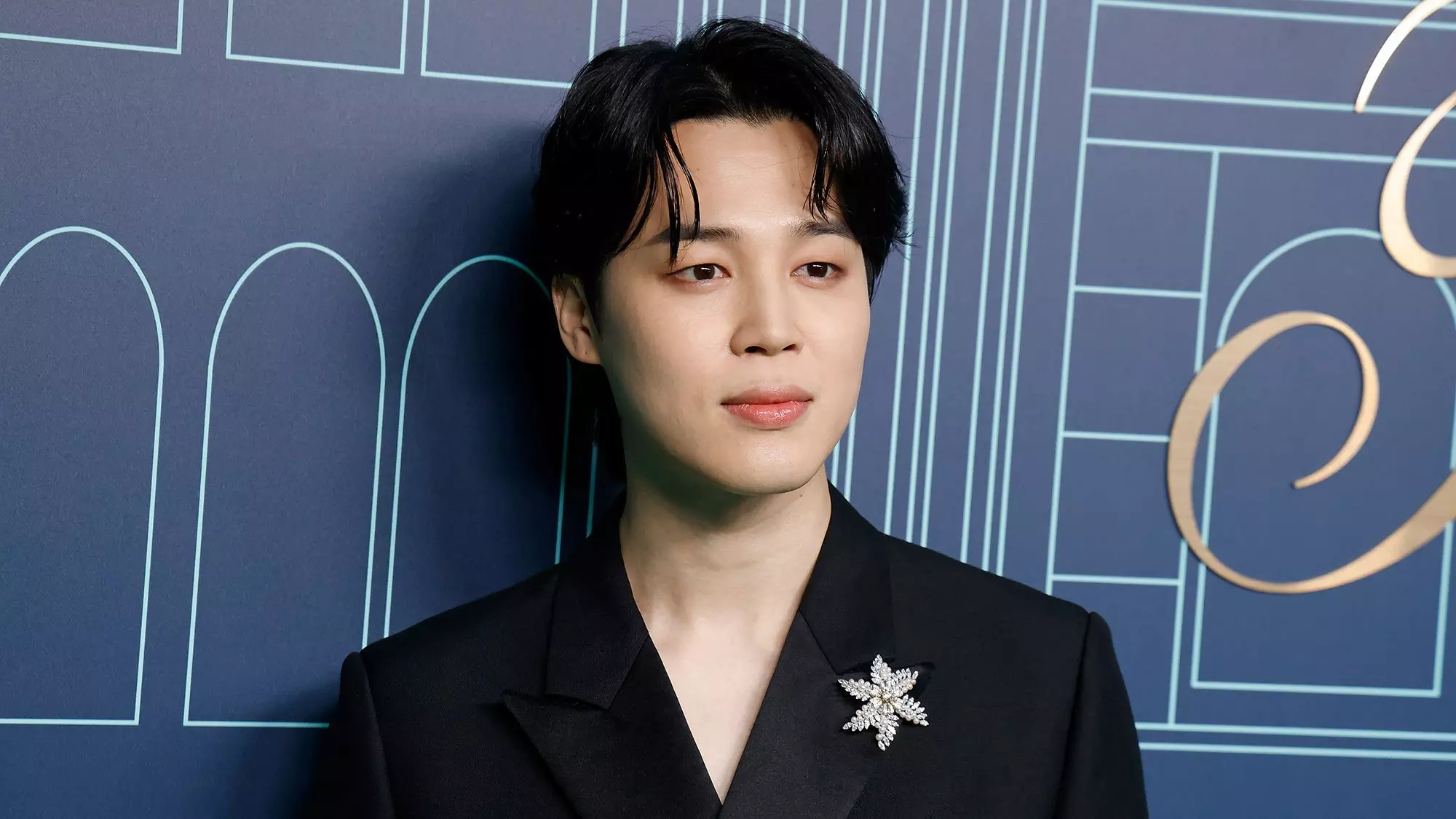
5 Takeaways from BTS Jimin's New Album, 'MUSE': A Bold Exploration Of Love And Inspiration

Ladies And Gentlemen, Glass Animals Are Floating In Space

Watch Stevie Wonder Win Album Of The Year

Credit: Paul Natkin/Getty Images
list
Celebrate 40 Years Of Def Jam With 15 Albums That Show Its Influence & Legacy
From the Beastie Boys' seminal 'License To Ill' and Jay-Z's 'Vol. 2… Hard Knock Life,' celebrate Def Jam with 15 of the label's essential albums.
This year marks the 40th anniversary of Def Jam Recordings, the New York label that made history in hip-hop, R&B, pop, and even thrash metal since its founding, and continues to do so today.
A label that began out of an NYU dorm room in 1984 quickly became an artistic (and business) powerhouse. Early acts like LL Cool J, the Beastie Boys, and Public Enemy were raw, adventurous, and risk-taking. Def Jam's roster opened new pathways in a still-young genre, seemingly every few months.
After that initial explosion, the label experienced a brief lull in the early 1990s when one label founder departed and the other expanded into fashion and comedy. Def Jam came roaring back beginning in 1994, and by 1998 the label was home to some of the most popular and influential artists in the game — including burgeoning megastars DMX and Jay-Z. To this day, Def Jam maintains a roster of both commercially successful and critically beloved artists in hip-hop, R&B, and pop.
To commemorate the anniversary of the label that gave us, well, pretty much everyone, here’s a list of 15 of Def Jam’s essential releases. While Def Jam brought audiences plenty of singles, EPs and remixes, this list primarily focuses on albums. Each project has a mix of artistic merit, popularity, influence and longevity, originality, and played a key role in the story of Def Jam as a whole. Think of it as a chronological run through the key albums that built one of the most lasting labels in modern music.
And finally: it must be said that in recent years, a dark shadow has begun to loom over Def Jam’s legacy. Label co-founder Russell Simmons been accused over the past seven years of numerous instances of sexual assault, dating back decades. In spite of these accusations, the label (in which Simmons hasn’t been involved for a quarter-century) remains on top, safeguarding its valuable archive while looking forward to another four decade run as fruitful as the first one.
T La Rock & Jazzy Jay - "It’s Yours" (1984)
The one single on this list is also the first piece of music ever released with the now-famous Def Jam logo. "It’s Yours" was a single produced by Def Jam co-founder Rick Rubin — his very first hip-hop production. Instrumentally, it was perhaps only comparable to Larry Smith and Def Jam co-founder Russell Simmons’ contemporaneous work with Run-D.M.C. Both "It’s Yours" and D.M.C.’s early work were severely stripped-down, consisting of a few drum sounds, an instrumental stab, and some scratches.
Lyrically, though, "It’s Yours" is worlds apart from "Sucker M.C.’s" — or pretty much anything else going on in hip-hop at the time. T La Rock, the brother of Treacherous Three member Special K, came from a family of educators, and he put every ounce of his erudition into the track. It begins, "Commentating, illustrating/ Description giving, adjective expert" and goes from there.
LL Cool J - 'Radio' (1985)
In the early 1980s, the state of the hip-hop album was very grim. Only a few existed, and they almost exclusively consisted of a few singles mixed with often-confusing filler. Two things changed that. First, Run-D.M.C.’s 1984 self-titled debut, which GRAMMY.com examined in depth a few months ago. Second was LL Cool J’s debut album Radio, the very first full-length album Def Jam ever released.
In many ways, Radio kicked off hip-hop’s Golden Age. The record shows LL, then still in his teens, as a versatile artist who can be boastful, funny, aggressive, lyrical. The album shows many different sides of his personality, and helped set the template for what a rap album could be.
Read more: 20 Iconic Hip-Hop Style Moments: From Run-D.M.C. To Runways
Beastie Boys - 'Licensed to Ill' (1986)
The Beasties would release more complex and enlightened albums than Licensed to Ill, and one of the members would eventually apologize for some of its lyrics. But there’s no denying that it was a smash hit. It was the first rap album to ever top the Billboard 200, got the group onstage with Madonna, and would eventually sell over 10 million copies.
Was some of that success due to their race? Sure. They were a credible group, signed to a hot rap label, at a time when it was still novel for white people to be performers in hip-hop. And yet, that’s not the whole story.
Licensed to Ill is a catchy, unique, energetic album, and the group members show undeniable chemistry. To this day, shout-filled, guitar-heavy anthems like "No Sleep till Brooklyn" and the ubiquitous "Fight for Your Right" can still get the party started.
Read more: The Beastie Boys Provide A License To Party
Public Enemy - 'It Takes a Nation of Millions to Hold Us Back' (1988)
There’s not too much you can say about this album that hasn’t already been said in the years of books, conferences, academic papers, and deluxe re-issues. It has ended up at or near the top of many all-time best lists. Its abrasive, collage-like approach to composition was never equalled (and, in light of current laws and practices around sampling, can never even be approached). The comic stylings of Flavor Flav bring just the right amount of levity to balance Chuck D’s takes on life-and-death issues.
Decades after its release, the album still sounds urgent. And sadly, in an America still roiled with tensions over race, incarceration, drugs, and the media, its concerns remain as relevant as ever.
Read more: 5 Things We Learned At "An Evening With Chuck D" At The GRAMMY Museum
Slick Rick - 'The Great Adventures of Slick Rick' (1988)
Slick Rick is the ultimate rap storyteller, and his debut album is the best example of his artistry. "I wrote them like an essay," Rick once said of creating the batch of songs that make up Great Adventures. He also compared it to doing stand-up. So you have exactly what those two reference points imply: stories that are well-constructed, and also frequently riotously funny.
Rick is the master of the telling detail (remember "Dave, the dope fiend shooting dope/ Who don’t know the meaning of water nor soap" from "Children’s Story"?), the humorous twist, the morality tale, the bedtime story, the character voice. His influence lives on in perhaps his most devoted protege, Ghostface Killah, as well as in any rapper who has tried to craft a song with a beginning, middle, and end.
Learn more: Essential Hip-Hop Releases From The 1980s: Slick Rick, RUN-D.M.C., De La Soul & More
Warren G - 'Regulate… G Funk Era'(1994)
A bit of an edge case here, as technically the record was put out by Violator Records and Rush Associated Labels, the latter of which was a sort of umbrella organization Def Jam ran in the mid-1990s. Many albums that could have made this list, including projects by Redman, Onyx, Domino, and Nice & Smooth, were released under the RAL banner. But Warren G’s debut, a giant hit in an era where Def Jam really needed it, became inextricably associated with the label, to the point where an article about the album on Universal Music’s website mentions Def Jam five times in the first two paragraphs.
Regulate is a pop-savvy take on the G-funk sound that was then ascendant. It was a huge success in a year that saw the introduction of tons of amazing rappers into the game. And Warren G being associated with Def Jam meant that the East Coast-centric label had expanded its geographic footprint.
Foxy Brown - 'Ill Na Na' (1996)
Def Jam wasn’t always a friendly place for female artists (despite many of the most important employees being women, including one-time president Nana Ashhurst). In fact, the label didn’t release a rap album by a woman until Nikki D’s Daddy’s Little Girl in 1991. So Foxy Brown’s impact — on Def Jam and on the rap world as a whole — cannot be overstated. Ill Na Na was an album that changed everything for female rappers. It had songs for the clubs, the block, and the radio. Foxy’s sexuality, versatility, and first-class rhyming would have an influence on countless rappers, most famously her number one fan Nicki Minaj, who has been effusively praising Foxy for more than a decade.
Read more: Ladies First: 10 Essential Albums By Female Rappers
DMX - 'It’s Dark and Hell Is Hot' (1998)
No less an authority than Nas referred to 1998 as "The year DMX took over the world." It’s Dark and Hell Is Hot is how he did it. The album set fire to Bad Boy’s so-called "shiny suit era" by embodying its polar opposite: a dark, grimy vision full of gothic synths; raspy, full-throated lyrics; and, sometimes, actual barks. Without DMX, there’s no NYC street rap return: no G-Unit mixtape run, no Diplomats.
The record is consistent and captivating from start to finish, and its thematic centerpiece comes, appropriately, about halfway through with "Damien," which reminds all of us that the most difficult battles we fight are the ones with ourselves.
Jay-Z - 'Vol. 2… Hard Knock Life' (1998)
Jay-Z has made more critically beloved albums than Vol. 2 (Reasonable Doubt and The Blueprint both fall in that category). He has made albums with bigger hits (The Blueprint 3 had a No. 1 hit with "Empire State of Mind"). But he has never made a more important LP.
Vol. 2 was the album that made Jay a superstar. Its Annie-sampling title track (produced by the late 45 King) sent him to the stratosphere — a process he actually documented on his follow-up album. But the record wasn’t just a commercial novelty. It showed Jay at the absolute top of his game: cocky, funny, and brilliant. Case in point: his novel approach to storytelling in "Coming of Age (Da Sequel)," where all the important action takes place in just a few seconds, inside the characters’ heads.
Read more: Songbook: How Jay-Z Created The 'Blueprint' For Rap's Greatest Of All Time
Ludacris - 'Word of Mouf' (2001)
Around the turn of the millennium, Def Jam had its sights set on conquering new territory. Specifically, the South. So they set up Def Jam South and hired Scarface to head it up. The entity’s biggest success came from an Atlanta DJ who went by Chris Luva Luva on the air, but began rapping as Ludacris.
Word of Mouf was Luda’s second album, but it was the one that really cemented his stardom with songs like "Rollout (My Business)," "Area Codes," and the immortal "Move Bitch" (the last of which has had an artist-approved second life as a protest chant). The album proved that the South was here to stay, and that Def Jam would have a role in determining its hip-hop future.
Learn more: A Guide To Southern Hip-Hop: Definitive Releases, Artists & Subgenres From The Dirty South
Scarface - 'The Fix' (2002)
Speaking of Scarface and Def Jam South, Face had no intention of dropping music while running the label. But, in his telling, Def Jam exec Lyor Cohen insisted on it, paying handsomely for the privilege.
"There were so many things working in my favor on that album," Scarface wrote in his memoir Diary of a Madman. "For the first time, I was working on an album for a label that believed in me 100 percent and didn’t want anything from me except for me to make the dopest album I could possibly make. And they went out of their way to make that possible."
Def Jam’s history of putting out classics inspired Face on The Fix, he writes in that book. And in the end, the album stands up there with any of them. It is one of only a small handful of rap records to earn a perfect five-mic rating from The Source, and it belongs in that rarified air with projects like Illmatic and Aquemini.
Kanye West - 'The College Dropout' (2004)
Yes, today Kanye West is the worst: a Hitler-loving, Trump-supporting, paranoid, antichoice, antisemite who stands accused of sexual harrassment. But two decades ago, the world met a Mr. West who at least seemed very different.
The College Dropout presented an artist who was already extremely well-known as a beatmaker. But Kanye’s carefully crafted persona as the bridge between mainstream rap and the underground — "First n— with a Benz and a backpack," as he put it — meant that he appealed to pretty much everyone. The College Dropout wasn't West at the top of his rap game, but it did show his skill at developing song concepts, at beats, and at creating an artistic vision so powerful, and so relatable, that it captivated an entire generation.
Cam’ron - 'Purple Haze' (2004)
It’s impossible to talk about Def Jam without discussing Roc-A-Fella. Jay-Z’s label hooked up with Def Jam in 1997, and had a years-long hot streak with artists like Kanye, Beanie Sigel, Freeway, the Young Gunz, and of course Cam’ron’s Diplomats crew — Cam, Juelz Santana, and the overall group all released projects there.
Purple Haze came at the very tail end of Roc-a-fella’s golden age. It has Cam at the absolute peak of his absurdist rhyming powers, keeping computers ‘puting and knocking out eight-syllable multis about Paris Hilton like it was nothing. During the Purple Haze era, it was Cam’s world, and we were all just lucky to be living in it.
Rihanna - 'Good Girl Gone Bad' (2007)
Rihanna’s first two projects were full of Caribbean sounds and ballads. But when her third album came along, she needed a change. Riri wanted to go "uptempo," and history shows that was the right choice. Good Girl Gone Bad began the singer’s transformation into the megastar we know today. It spawned five singles and two separate quickie tie-in albums (Good Girl Gone Bad: Reloaded and Good Girl Gone Bad: The Remixes).
"Umbrella" was the way forward. Rihanna had a No. 1 record prior, but she’d never made a sensation like this. The song (with a guest verse by then-Def Jam president Jay-Z) not only made it to the top slot, it also won a GRAMMY and was undeniably the song of the summer. The album also contained the sensation "Don’t Stop the Music," a track that kickstarted the EDM/pop hybrid that dominated the late aughts. Without Good Girl Gone Bad, it’s safe to say we’d be living in a very different, Fenty-less world.
Frank Ocean - 'Channel Orange' (2012)
One could fill a whole blurb about Channel Orange simply by quoting the extreme praise it received. "A singular achievement in popular culture." "Landed with the crash and curiousness of a meteor." Two days after its release, Pitchfork was already saying that it "feels like a classic."
And yet, somehow even that kind of acclaim doesn’t do the album justice. You really had to be there when it came out, when Frank looked into his soul and, in doing so, connected deeply with so many listeners
Read more: Frank Ocean Essentials: 10 Songs That Embody The Elusive Icon's R&B Genius
"Channel Orange is the most concentrated version of 2012 in 2012 so far," wrote Sasha Frere-Jones at the time, in one of the most dead-on statements about the album. It expressed the contradictions we all lived in. Its fragmentation mirrored the social media that was beginning to take over all of our lives. Ocean left bits of his biography scattered throughout the album, but they almost didn’t matter. He was speaking for all of us, in the way only great artists can.
A Guide To New York Hip-Hop: Unpacking The Sound Of Rap's Birthplace From The Bronx To Staten Island
PRIDE & Black Music Month: Celebrating LGBTQIA+ & Black Voices
Listen To GRAMMY.com's 2024 Pride Month Playlist Of Rising LGBTQIA+ Artists
9 New Pride Anthems For 2024: Sabrina Carpenter's "Espresso," Chappell Roan's "Casual" & More
What's The Future For Black Artists In Country Music? Breland, Reyna Roberts & More Sound Off
Why Beyoncé Is One Of The Most Influential Women In Music History | Run The World
9 Ways To Support Black Musicians & Creators Year-Round
How Beyoncé Is Honoring Black Music History With 'Cowboy Carter,' "Texas Hold Em," 'Renaissance' & More
The Evolution Of The Queer Anthem: From Judy Garland To Lady Gaga & Lil Nas X
15 LGBTQIA+ Artists Performing At 2024 Summer Festivals
50 Artists Who Changed Rap: Jay-Z, The Notorious B.I.G., Dr. Dre, Nicki Minaj, Kendrick Lamar, Eminem & More
Fight The Power: 11 Powerful Protest Songs Advocating For Racial Justice

How Rihanna Uses Her Superstardom To Champion Diversity | Black Sounds Beautiful

How Beyoncé Has Empowered The Black Community Across Her Music And Art | Black Sounds Beautiful
5 Women Essential To Rap: Cardi B, Lil' Kim, MC Lyte, Sylvia Robinson & Tierra Whack
Celebrate 40 Years Of Def Jam With 15 Albums That Show Its Influence & Legacy

Watch Frank Ocean Win Best Urban Contemporary Album At The 2013 GRAMMYs | GRAMMY Rewind
A Brief History Of Black Country Music: 11 Important Tracks From DeFord Bailey, Kane Brown & More
10 Women In African Hip-Hop You Should Know: SGaWD, Nadai Nakai, Sho Madjozi & More
10 Artists Shaping Contemporary Reggae: Samory I, Lila Iké, Iotosh & Others
The Rise Of The Queer Pop Star In The 2010s
How Sam Smith's 'In The Lonely Hour' Became An LGBTQIA+ Trailblazer
How Queer Country Artists Are Creating Space For Inclusive Stories In The Genre

How Jay-Z Became The Blueprint For Hip-Hop Success | Black Sounds Beautiful

How Kendrick Lamar Became A Rap Icon | Black Sounds Beautiful
Dyana Williams On Why Black Music Month Is Not Just A Celebration, But A Call For Respect
6 LGBTQIA+ Latinx Artists You Need To Know: María Becerra, Blue Rojo & More
7 LGBTQ+ Connections In The Beatles' Story
Breaking Down Normani's Journey To 'Dopamine': How Her Debut Album Showcases Resilience & Star Power
10 Alté Artists To Know: Odunsi (The Engine), TeeZee, Lady Donli & More

Celebrating Black Fashion At The GRAMMYs Throughout The Decades | Black Music Month
FLETCHER Is "F—ing Unhinged" & Proud Of It On 'In Search Of The Antidote'
For Laura Jane Grace, Record Cycles Can Be A 'Hole In My Head' — And She's OK With That
15 Essential Afrorock Songs: From The Funkees To Mdou Moctar
50 Years In, "The Wiz" Remains An Inspiration: How A New Recording Repaves The Yellow Brick Road
Why Macklemore & Ryan Lewis' "Same Love" Was One Of The 2010s' Most Important LGBTQ+ Anthems — And How It's Still Impactful 10 Years On
Songbook: The Complete Guide To The Albums, Visuals & Performances That Made Beyoncé A Cultural Force

Why Cardi B Is A Beacon Of Black Excellence | Black Sounds Beautiful
Queer Christian Artists Keep The Faith: How LGBTQ+ Musicians Are Redefining Praise Music
9 Revolutionary Rap Albums To Know: From Kendrick Lamar, Black Star, EarthGang & More
9 "RuPaul's Drag Race" Queens With Musical Second Acts: From Shea Couleé To Trixie Mattel & Willam
5 Black Artists Rewriting Country Music: Mickey Guyton, Kane Brown, Jimmie Allen, Brittney Spencer & Willie Jones
How 1994 Changed The Game For Hip-Hop

How Whitney Houston’s Groundbreaking Legacy Has Endured | Black Sounds Beautiful
LGBTQIA+-Owned Venues To Support Now

Celebrate The Genius Of Prince | Black Sounds Beautiful

Explore The Colorful, Inclusive World Of Sylvester's 'Step II' | For The Record
Black-Owned Music Venues To Support Now
5 Artists Fighting For Social Justice Today: Megan Thee Stallion, Noname, H.E.R., Jay-Z & Alicia Keys
Artists Who Define Afrofuturism In Music: Sun Ra, Flying Lotus, Janelle Monae, Shabaka Hutchings & More
5 Trans & Nonbinary Artists Reshaping Electronic Music: RUI HO, Kìzis, Octo Octa, Tygapaw & Ariel Zetina
From 'Shaft' To 'Waiting To Exhale': 5 Essential Black Film Soundtracks & Their Impact
5 Emerging Artists Pushing Electronic Music Forward: Moore Kismet, TSHA, Doechii & Others
5 Artists Essential to Contemporary Soca: Machel Montano, Patrice Roberts, Voice, Skinny Fabulous, Kes The Band

How Quincy Jones' Record-Setting, Multi-Faceted Career Shaped Black Music On A Global Scale | Black Sounds Beautiful
5 Black Composers Who Transformed Classical Music
Brooke Eden On Advancing LGBTQ+ Visibility In Country Music & Why She's "Got No Choice" But To Be Herself
Let Me Play The Answers: 8 Jazz Artists Honoring Black Geniuses
Women And Gender-Expansive Jazz Musicians Face Constant Indignities. This Mentorship Organization Is Tackling The Problem From All Angles.

Histories: From The Yard To The GRAMMYs, How HBCUs Have Impacted Music
How HBCU Marching Band Aristocrat Of Bands Made History At The 2023 GRAMMYs

Photo: Michael Ochs Archives/Getty Images
feature
On This Day In Music: 2 Live Crew's 'As Nasty As They Wanna Be' Becomes First Album Declared Legally Obscene, Anticipates First Amendment Cases
Known for their raunchy take on hip-hop, 2 Live Crew made history when 'As Nasty As They Wanna Be' was declared legally obscene. Thirty-four years later, here's how they fought back and turned their battle into a landmark First Amendment case.
When 2 Live Crew released their third studio album, they never imagined it would lead to a mammoth of legal entanglements. In 1989, the Miami-based hip-hop group dropped As Nasty As They Wanna Be, a title that held true throughout the ensuing legal battle.
In an effort to put their music on the map and distinguish themselves in the rap game, amidst one of hip-hops finest eras, the album featured sexually explicit themes and graphic content, leading to extreme popularity within pop culture. However, this widespread attention wasn’t all in a good light.
In Broward County, Florida, Sheriff Nick Navarro took a stand against the group, endeavoring to prevent local record store owners from selling the provocative album. In defiance of this censorship, 2 Live Crew filed a lawsuit in federal court, seeking legal recourse to halt the sheriff’s crackdown, prevent restrictions on album sales and legally defend their work as non-obscene.
Through the court's ruling, they deemed the work legally obscene and prohibited retailers from selling the album in Florida’s Broward, Dade, and Palm Beach counties.
Following the ruling, Florida record store owner Charles Freeman was arrested for selling As Nasty As They Wanna Be and three 2 Live Crew members were also arrested for performing their explicit music live at a nightclub in Hollywood, Florida.
Challenging the initial ruling with tenacity, the group’s record label, Luke Records, founded by 2 Live Crew member Luther Campbell, brought the case in front of the Eleventh Circuit Court of Appeals.
In this legal battle, the Eleventh Circuit Court applied the Miller Test, a benchmark for obscenity set by the United States Supreme Court’s test in the 1973 Miller v. California case. To meet the standards of the test, the work being challenged must appeal to a prurient, or shameful interest in sex, depict sexual materials in a patently offensive way, and lack serious literary, artistic, political, or scientific value. Luke Records called four experts in their fields to the stand, while Navarro failed to provide concrete evidence that the album met the standards outlined by the Miller Test.
In the Court of Appeals, it was found that the album did not meet the standards of obscenity that were set forth in the Miller Test. Since As Nasty As They Wanna Be was a creative work of music, the court ruled that the album had artistic value and thus did not meet all the standards to be deemed as obscene.
"I’ve been listening to the album by 2 Live Crew. It’s not the best album that’s ever been made, but when I heard they banned it, I went out and bought it," said David Bowie during his 1990 tour in Philadelphia, stopping in the middle of his performance to defend the group. "Freedom of thought, freedom of speech — it’s one of the most important things we have."
Last week, 2 Live Crew member Brother Marquis passed away, prompting Campbell to take to Twitter and honor his friend and fellow member, stating, "We took on so many fights for the culture, made great music together, something I will never forget."
To this day, the case against 2 Live Crew serves as a legal standard for First Amendment Rights, upholding the boundaries between censorship and freedom of speech within music.
"They really set a legal precedent for hip-hop artists today to be able to create in the way that they choose to," says Kiana Fitzgerald in her book "Ode to Hip-Hop." In the book, she also cites contemporary examples of hip-hop artists who openly speak about sex in their discography, like Megan Thee Stallion, Cardi B, Lil Wayne, and others.
Through 2 Live Crew’s legal fight, they paved the way as trailblazers for hip-hop artists to be As Nasty As They Wanna Be — without facing speech-smothering legal repercussions.
Explore More History-Making Moments In Music

On This Day In Music: Spice Girls Release "Wannabe," Their Iconic Debut Single

On This Day In Music: Michael Jackson Passes Away In Los Angeles At Age 50
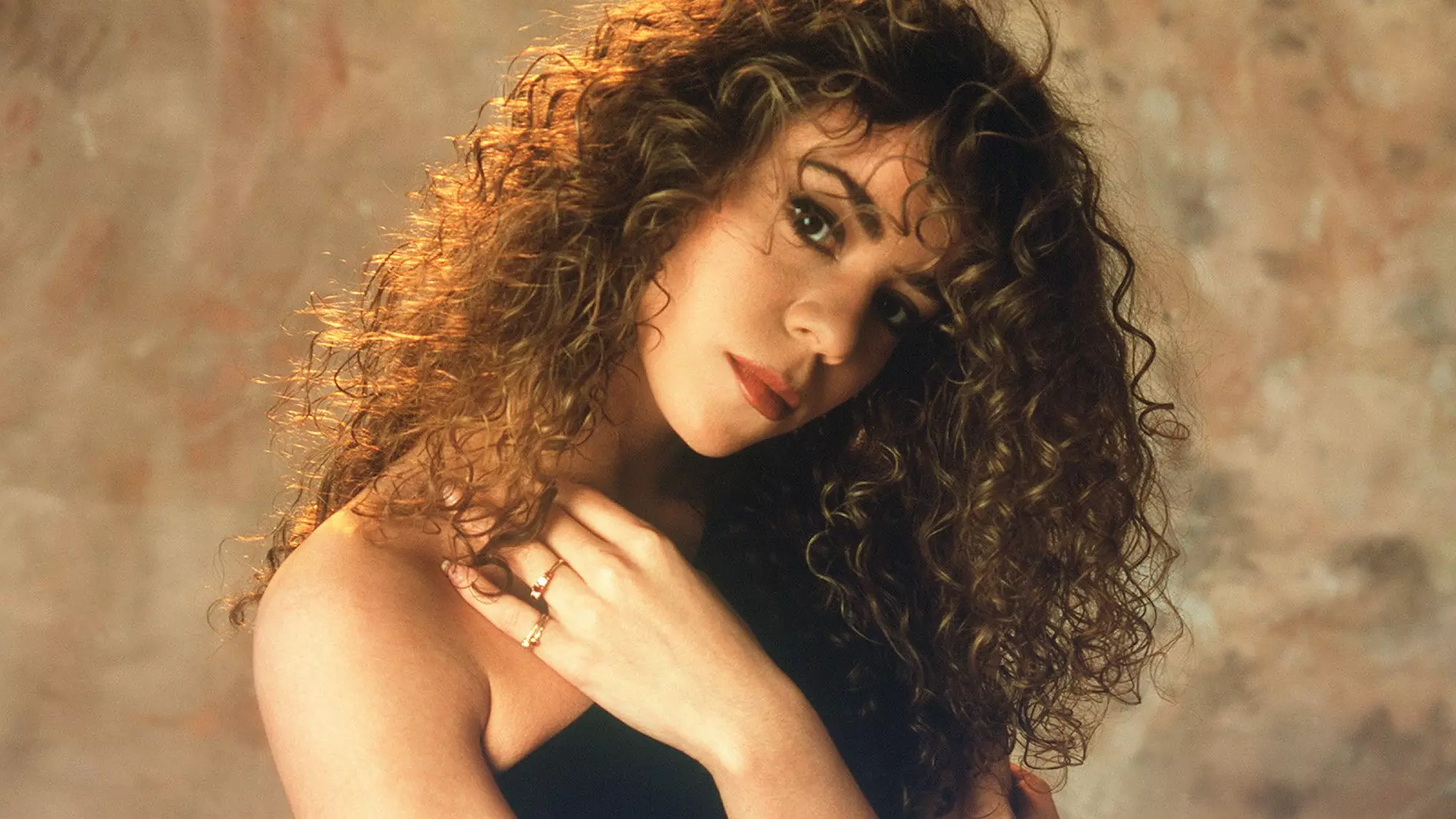
On This Day In Music: Mariah Carey Releases Her Self-Titled Debut Album
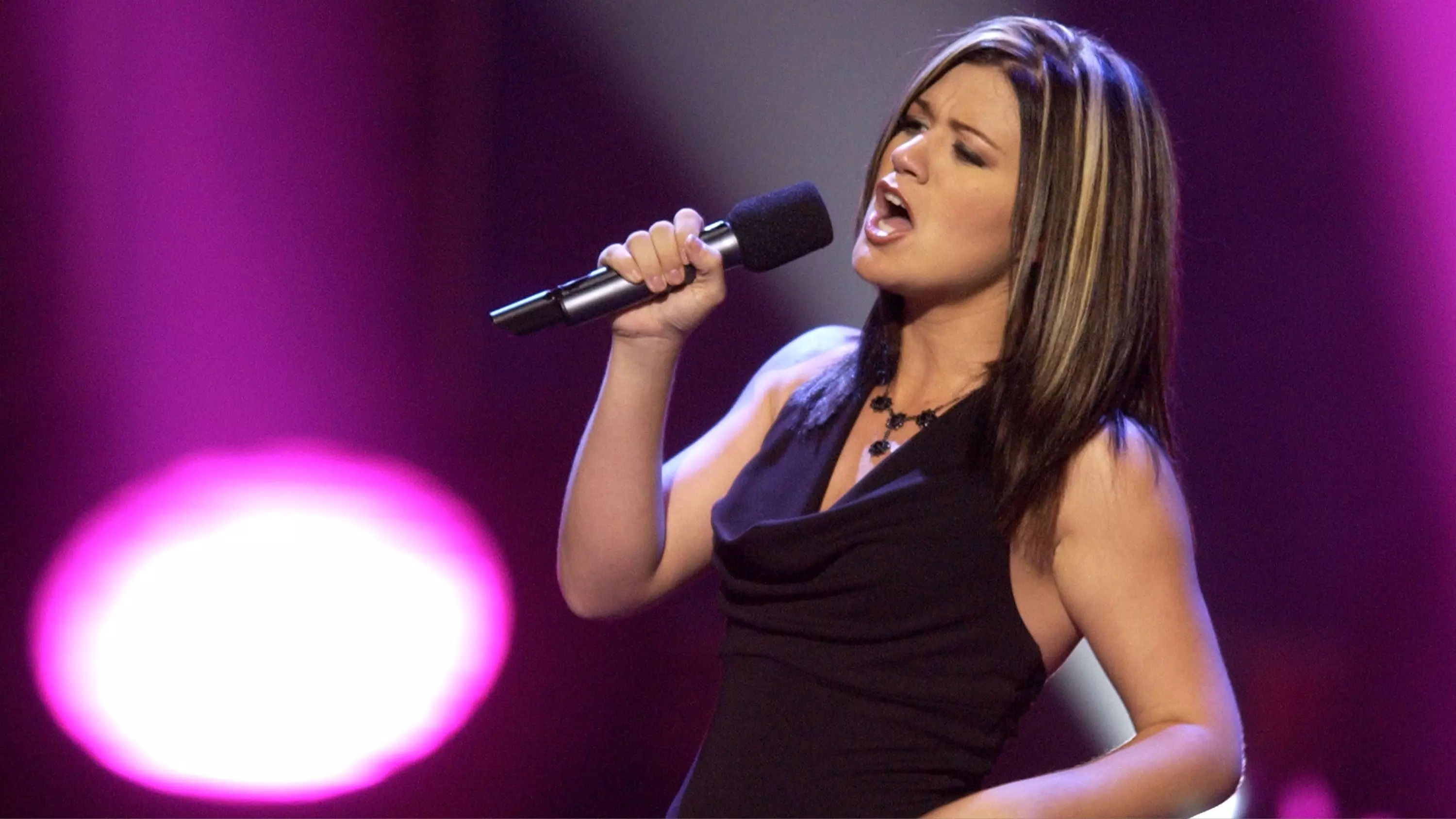
On This Day In Music: "American Idol" Premieres On Fox Network
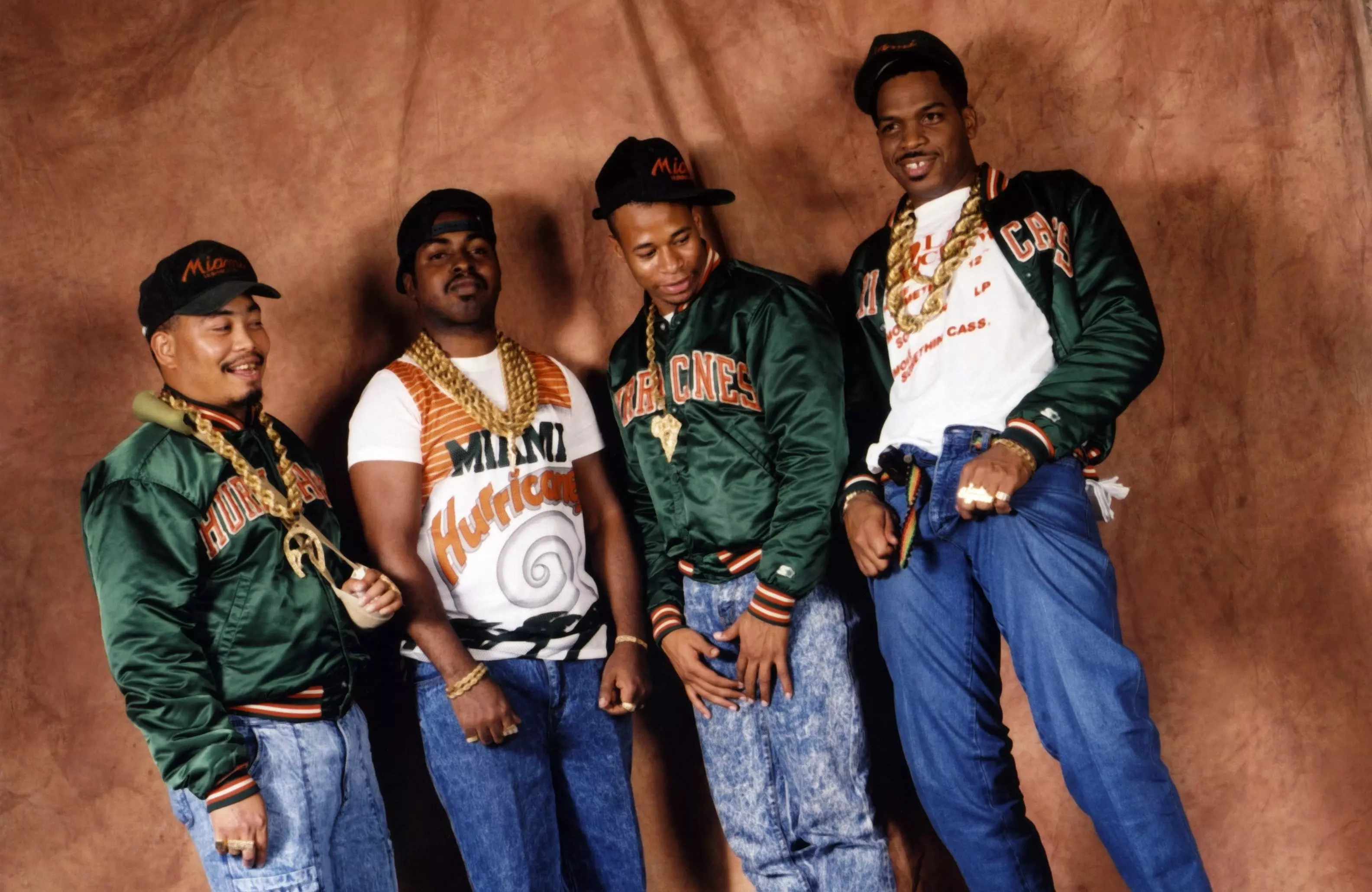
On This Day In Music: 2 Live Crew's 'As Nasty As They Wanna Be' Becomes First Album Declared Legally Obscene, Anticipates First Amendment Cases
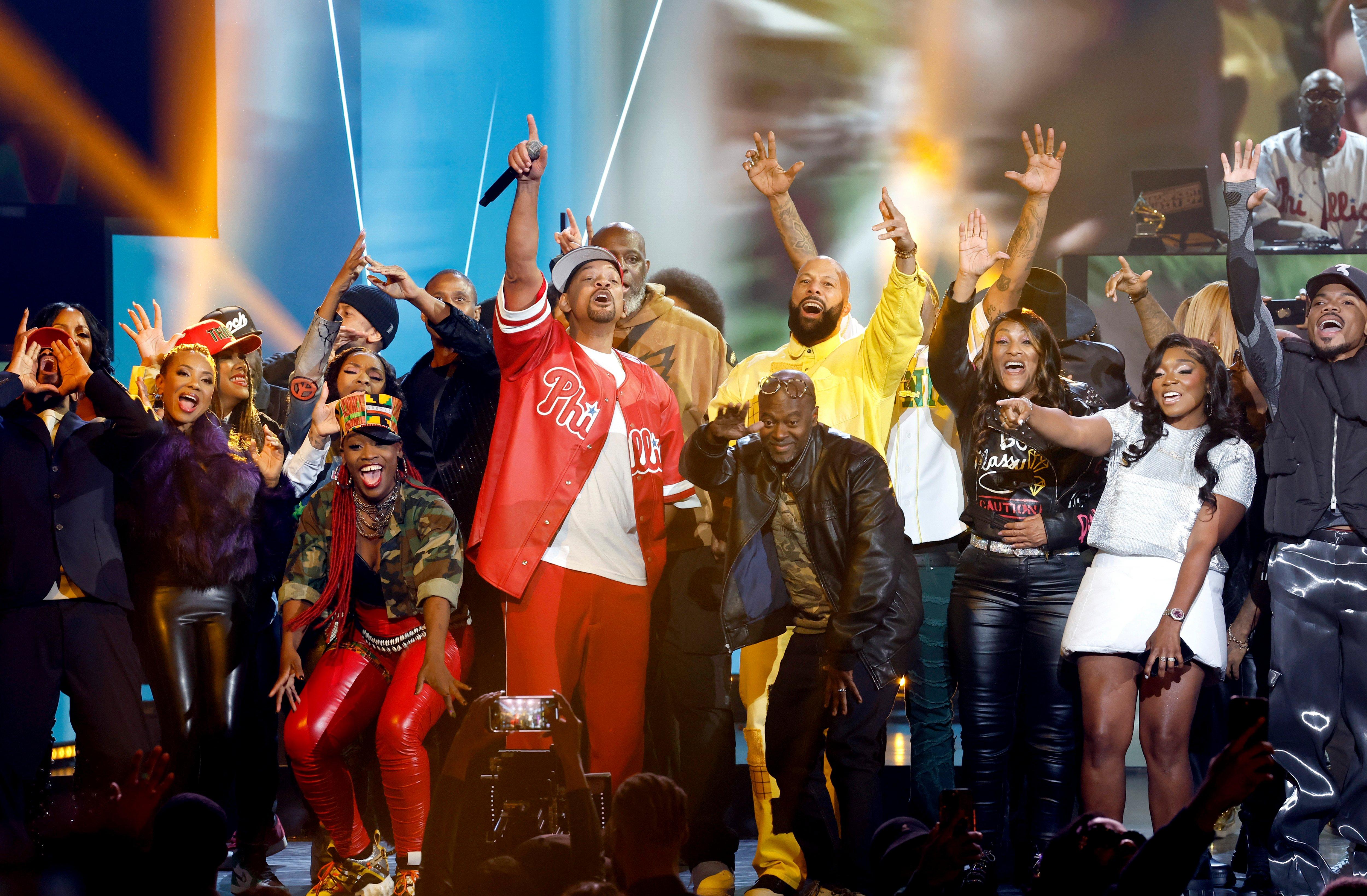
Photo: Frazer Harrison/Getty Images for The Recording Academy
news
6 Highlights From "A GRAMMY Salute To 50 Years Of Hip-Hop": Performances From DJ Jazzy Jeff & The Fresh Prince, Queen Latifah, Common & More
A multi-generational collective of artists commemorated the culture, sound and influence of hip-hop during a two-hour televised special. Read on for the biggest moments from "A GRAMMY Salute To 50 Years Of Hip-Hop," which aired Dec. 10.
While 2023 marked hip-hop's 50th anniversary, the year comes to a close with a show that proves the celebration can't, and won't stop. On Dec. 10, the Recording Academy's "A GRAMMY Salute To 50 Years Of Hip-Hop" paid homage to the culture's originators, innovators, and contemporary leaders.
Co-produced by Questlove, the two-hour televised special featured legendary acts and contemporary artists who have cultivated the genre into a pop cultural juggernaut. Icons including LL Cool J, DJ Jazzy Jeff & The Fresh Prince, Jermaine Dupri, Too Short, E-40, De La Soul, DJ D-Nice, Doug E. Fresh and others transformed "A GRAMMY Salute To 50 Years Of Hip-Hop" into an oral and visual commemoration of hip-hop's enduring influence.
From regional tributes to poetic remembrances, the anniversary special was a showcase of adoration for hip-hop's OGs as well as a newer generation of entertainers who are leading hip-hop into a glorious next 50 years.
Read on for six highlights from "A GRAMMY Salute To 50 Years Of Hip-Hop," which aired Sunday, Dec. 10 on CBS Television Network, and on demand on Paramount+.
Queen Latifah and Monie Love┃Frazer Harrison/Getty Images for The Recording Academy
Ladies First: Honoring The Queens Of Hip-Hop
The audience erupted into thunderous applause the moment DJ Spinderella touched the ones and twos and Queen Latifah graced the stage. As the two went back and forth in a performance of "Ladies First" joined by British MC Monie Love, the tone was set: This was a celebration of and for the women in hip-hop.
As the song closed, early pioneers MC Sha-Rock and Roxanne Shante joined the trio on stage to perform their signature hits. In a continued showcase of women’s evolution in hip-hop, J.J. Fad performed their early crossover hit "Supersonic," while MC Lyte, Remy Ma, and Latto also joined onstage. As a collective, the congregation closed out with a performance of "U.N.I.T.Y."
DJ Paul and Juicy J of Three 6 Mafia┃Frazer Harrison/Getty Images for The Recording Academy
The South Still Got Something To Say
One could not imagine the impact of André 3000's words at the Source Awards in 1995 when he said "the South got something to say." Since then, rappers from Atlanta, Baton Rouge, Memphis, Miami, and Texas have taken these words as a rallying cry that the East and West coasts aren't the only regions worthy of hip-hop’s crowns.
Aptly described as "The Third Coast," the South was well-represented onstage. Jeezy and Jermaine Dupri showcased the universal power of Atlanta, while Bun B represented the great state of Texas and the legacy of Pimp C in his performance of "International Players Anthem." Memphis took it back with a performance of "Stay Fly" by Three 6 Mafia, while viewers were reminded of the city’s future by an enthusiastic presentation of "Tomorrow" by GloRilla.
Boosie Badazz stole the stage with his rendition of "Wipe Me Down," which highlighted the cities outside of the Atlanta, Houston, and Memphis corridor which contributed to the development and prominence of Southern hip-hop. His energy was enlightened by Miami Luke, the man behind 2 Live Crew, who brought booty shaking Miami bass to stage to round out the intergenerational collective of performers from down South.
Explore More Of "A GRAMMY Salute to 50 Years of Hip-Hop"
6 Highlights From "A GRAMMY Salute To 50 Years Of Hip-Hop": Performances From DJ Jazzy Jeff & The Fresh Prince, Queen Latifah, Common & More
Here’s All The Performers And Songs Featured At "A GRAMMY Salute To 50 Years Of Hip-Hop"
Watch Backstage Interviews From "A GRAMMY Salute To 50 Years Of Hip-Hop" Featuring LL Cool J, Questlove, Warren G & E-40, And Many More
How DJ Jazzy Jeff & The Fresh Prince Created The Ultimate Prototype For The Producer/Rapper Duo
For Questlove, "A GRAMMY Salute To 50 Years Of Hip-Hop" Is Crucial For Rap's Legacy
How Lin-Manuel Miranda Bridged The Worlds Of Broadway & Hip-Hop
How To Watch "A GRAMMY Salute To 50 Years Of Hip-Hop": Air Date, Performers Lineup, Streaming Channel & More
Full Performer Lineup For "A GRAMMY Salute To 50 Years Of Hip-Hop" Announced: Roddy Ricch, Chance The Rapper, Nelly, Coi LeRay, Akon, Mustard & More Artists Added
DJ Jazzy Jeff And The Fresh Prince To Reunite Onstage At "A GRAMMY Salute To 50 Years Of Hip-Hop"

"A GRAMMY Salute To 50 Years Of Hip-Hop" Airs Sunday, Dec. 10: Save The Date
(L-R) Yukmouth and Kuzzo Fly of The Luniz, Yo-Yo, The Lady of Rage, B-Real and Sen Dog of Cypress Hill┃Monica Schipper/Getty Images for The Recording Academy
…But The West Coast Remains The Best Coast
The West Coast was among the first to differentiate itself from the East Coast with the invention of G-funk — a musical tradition that blended resurrected funk samples with live instrumentation to create a melodic background for the region’s musicians to rap upon. One of the first hits to crossover was "Regulate" by Warren G, which opened the special’s tribute to the West Coast.
The song was followed by chart topping "I Got 5 on It" by Luniz, a cult classic which received a secondary wave of prominence by Jordan Peele who remixed the song for his film Us. However, it was the performances by The Lady of Rage and Yo-Yo that served as an educational lesson for those who forget about the contributions of women to the growth of the West Coast sound in hip-hop.
Another standout from the West Coast section was Cypress Hill, the Southern California hip-hop group that blended rock, metal, and Latin music in hip-hop. Yet, it was the presence of E-40 and Too Short that solidified the importance of the Bay Area in the lineage of West Coast hip-hop.
Flavor Flav of Public Enemy, T.I., and Chuck D of Public Enemy┃Monica Schipper/Getty Images for The Recording Academy
"Salute" Paid Tribute To Those Who Didn’t Make It To 50
Jay-Z turned 54 days before "A GRAMMY Salute To 50 Years Of Hip-Hop" aired, and it was somber to consider his contemporaries who didn't make it to see the culture's golden anniversary.
Names such as the Notorious B.I.G., who grew up with Jay-Z, as well as Nipsey Hussle were shared on screen as DJ D-Nice and Doug E. Fresh paid respect to the legions of rappers who passed before hip-hop’s 50th. Among those honored were Tupac Shakur, his friend and frontman of Digital Underground Shock G, New York drill leader Pop Smoke, TakeOff of the Migos, and Gangsta Boo — all of whom were instrumental in making hip-hop the global force that it is today.
Rick Ross, Chance the Rapper and 2 Chainz┃Frazer Harrison/Getty Images for The Recording Academy
Hip-Hop Got A Big "Happy Birthday"
Hip-hop and party culture have been interwoven since DJ Kool Herc and Cindy Campbell threw the first party at 1520 Sedgwick Avenue in the Bronx. It's only fitting that the genre’s 50th anniversary would be ushered in with "Birthday Song" by 2 Chainz. As the Atlanta rapper reminded attendees that the best place to celebrate your birthday is in the city's strip clubs, Gunna graced the stage with his verse of "Hot" from Young Thug’s album So Much Fun.
It was the sample of Grandmaster Flash and The Furious Five’s "The Message" that brought hip-hop’s back home to the East Coast with a riveting performance by Coi Leray. Although, Rick Ross, Nelly, and Chance The Rapper reminded the East of the party and chart potential of Miami St. Louis, and Chicago with their rendition of "Hustlin," "E.I.," and "No Problem."
DJ Jazzy Jeff and Will Smith a.k.a. the Fresh Prince┃Frazer Harrison/Getty Images for The Recording Academy
DJ Jazzy Jeff & The Fresh Prince Got Thanks And Praise
It was the advocacy of DJ Jazzy Jeff & The Fresh Prince that encouraged bridge-building between the Recording Academy and the hip-hop community. When the duo received hip-hop’s first GRAMMY Award for Best Rap Performance, the rapper/producer elected to boycott the show. Although they attended the following year, the duo displayed a courageous appreciation of their art that continues to be appreciated by their peers.
Questlove introduced his fellow Philadelphians and the duo erupted into a medley of their classics. Soon, LL Cool J, Queen Latifah, and others jumped up to pay homage to Jeff and Will, two children from Philadelphia who changed the world.
